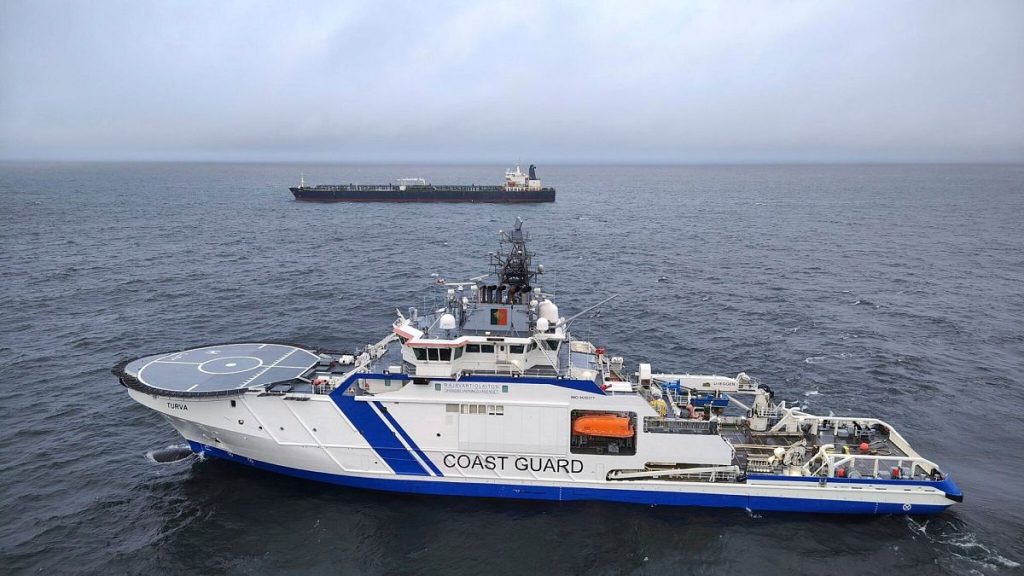The discovery of an extensive anchor drag mark on the seabed of the Baltic Sea, coinciding with damage to the vital Estlink-2 power cable and multiple data cables, has sparked a serious investigation by Finnish authorities. The trail of destruction, stretching “dozens of kilometres, if not almost a hundred kilometres,” points towards the involvement of a specific vessel, the Eagle S, a ship already under scrutiny and now seized for examination. This incident, occurring on December 25th, disrupted the flow of electricity between Finland and Estonia through the Estlink-2 cable, though the impact on services was minimal. However, it follows a pattern of similar incidents targeting critical infrastructure in the region, including damage to two Baltic data cables and the Nord Stream pipeline, incidents widely suspected to be acts of sabotage.
The Eagle S, now at the heart of the investigation, has been identified as part of Russia’s shadow fleet, a collection of aging tankers operating outside of Western regulations. This fleet has emerged as a means for Russia to circumvent sanctions imposed by Western nations, particularly in the energy sector. Operating without Western-regulated insurance and often lacking proper maintenance, these vessels pose significant environmental risks due to their age and the absence of rigorous oversight. The involvement of the Eagle S in the Baltic Sea cable incident immediately raised concerns about potential sabotage and further highlighted the vulnerabilities of critical infrastructure in the region.
Finnish investigators have meticulously gathered evidence, linking the anchor drag mark to the Eagle S through underwater research. While they have established a preliminary understanding of the sequence of events leading to the cable damage, the crucial question of intent remains a central focus of the ongoing investigation. Determining whether the damage was accidental or a deliberate act of sabotage will significantly impact the legal and geopolitical ramifications of the incident. The investigation is examining potential criminal charges against the Eagle S and its operators, including aggravated interference with telecommunications, aggravated vandalism, and aggravated regulatory violations. These charges reflect the seriousness of the incident and the potential threat it posed to critical infrastructure and regional security.
The timing of the cable damage, occurring shortly after Finland joined NATO, adds another layer of complexity to the situation. Finland, sharing a substantial 1,340-kilometer border with Russia, abandoned its long-standing neutrality in 2023 in response to Russia’s invasion of Ukraine. The decision to join the alliance significantly altered the geopolitical landscape of the region and increased tensions with Russia. The cable incident, therefore, has been viewed within the context of these heightened tensions, raising concerns about potential retaliatory actions or attempts to destabilize the region.
The incident involving the Eagle S and the Baltic Sea cables has prompted NATO to increase its patrols in the region. This heightened security posture reflects the alliance’s concern about the vulnerability of critical infrastructure and the potential for further disruptions. NATO Secretary General, Mark Rutte’s acknowledgment of the increased patrols underscores the seriousness with which the alliance is taking the incident and the importance of safeguarding vital infrastructure in the Baltic Sea region. The incident has highlighted the need for enhanced security measures to protect underwater cables and pipelines, which are essential for energy supply, communication, and data transfer.
The incident involving the Eagle S underscores several critical issues: the vulnerability of underwater infrastructure, the risks posed by Russia’s shadow fleet, and the increasing geopolitical tensions in the Baltic Sea region. The investigation’s outcome will be crucial in determining the appropriate course of action, which could range from diplomatic protests to more assertive responses. The incident also highlights the need for international cooperation in protecting critical infrastructure from intentional damage or accidental disruptions. The investigation serves as a stark reminder of the intricate interplay between geopolitical tensions, economic interests, and the security of vital infrastructure in a rapidly changing global landscape.










